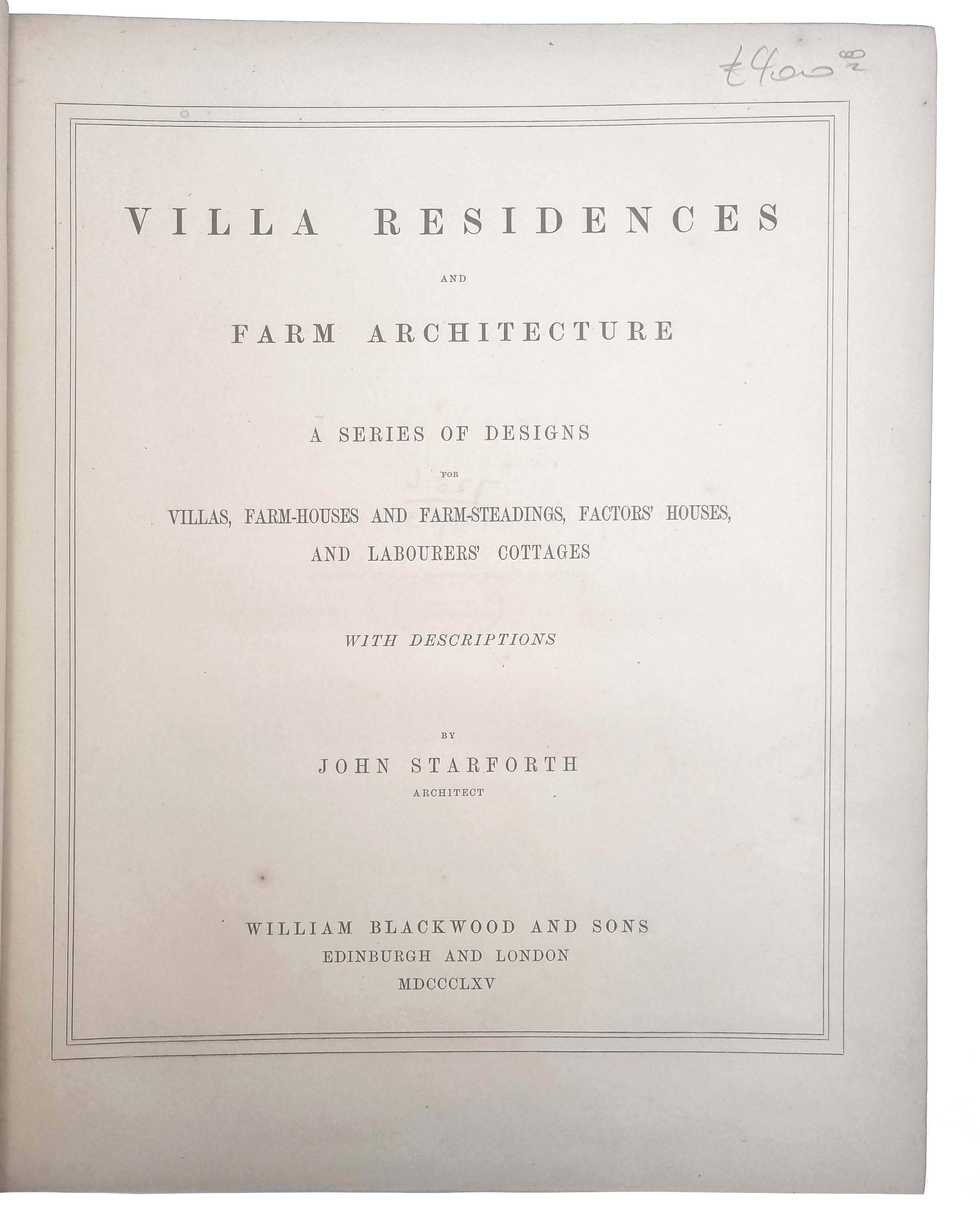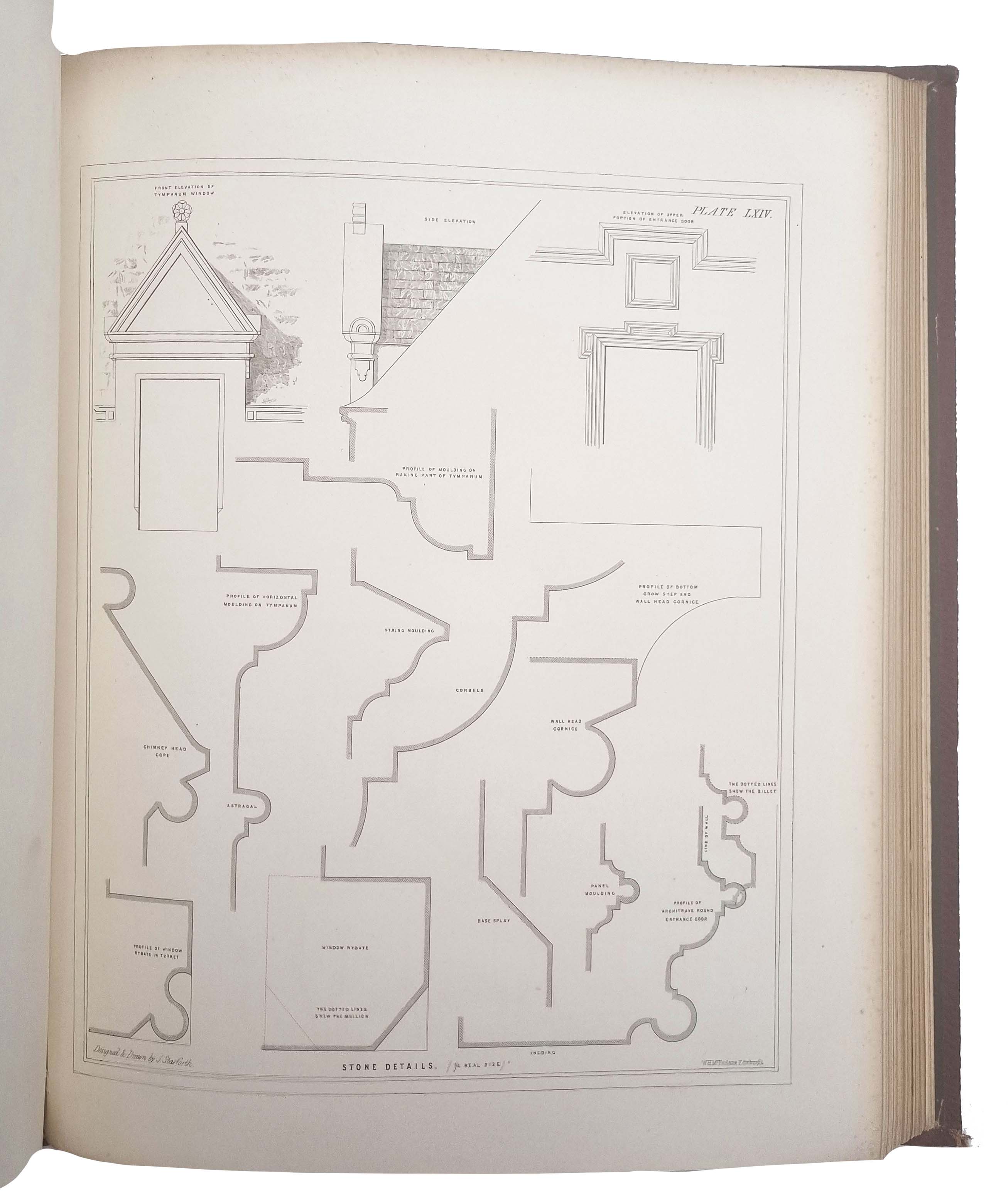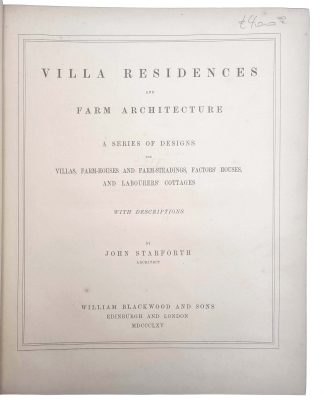STARFORTH, John
VICTORIAN RURAL AND FARM ARCHITECTURE
Villa Residencies and Farm Architecture.
London, W. Blackwood & Sons, 1865.£300.00
Folio. pp. [78] + 102 lithographs of plans, elevations, and ornaments for Victorian rural and farm architecture. Slight toning to letterpress, minor dust soiling to margins and edges of some plates. A very good, clean copy in contemporary embossed crimson publisher’s cloth, title gilt to upper board, spine gilt, a little soiled, couple of tiny losses. Ink stamp of Bolton Public Library to title verso and another.
The second, enlarged edition of this scarce, lavishly illustrated work on Victorian rural and farm architecture. The substantial section on villa residencies appears here for the first time. The English John Starforth (1822-98) worked only in Scotland on churches, and civic and farm buildings. His written output focuses on rural architecture, and ‘Villa Residencies’ is dedicated to the Highland and Agricultural Society of Scotland. Based on his ‘The Architecture of the Farm’ (1953), the work was enlarged with designs for villa residences at the readers’ request. Considering works on villa architecture up to that time insufficient to meet present needs, Starforth wrote his ‘to furnish such a variety of designs as he trusts will be found suitable for the different tastes and requirements of the public’, adding that ‘in the majority of cases, it is no more expense to build that which is pleasing and appropriate than what is repulsive to the most untutored mind’. All plates come with a short explanation of the design. Divided into 3 sections, the lithographs illustrate villa residences (40 plates), cottages for labourers, farmhouses, and factor’s houses (43 plates), and farm-steading and offices (17 plates). Some depict stone decorations, e.g., mouldings, chimney stalks, turrets, cornices, as well as decorated plaster ceilings. There is an interesting observation on bathrooms: ‘On the various plans […] the baths are all shown fixed; but as many people prefer a portable apparatus, whereby some expense is saved, in such cases the space required for a bath-room can be applied to some other useful purpose; but whatever may be the opinions of those opposed to fixed or permanent baths, there can be no doubt of their efficiency for many special purposes’. A scarce work.
Not at RIBA.



